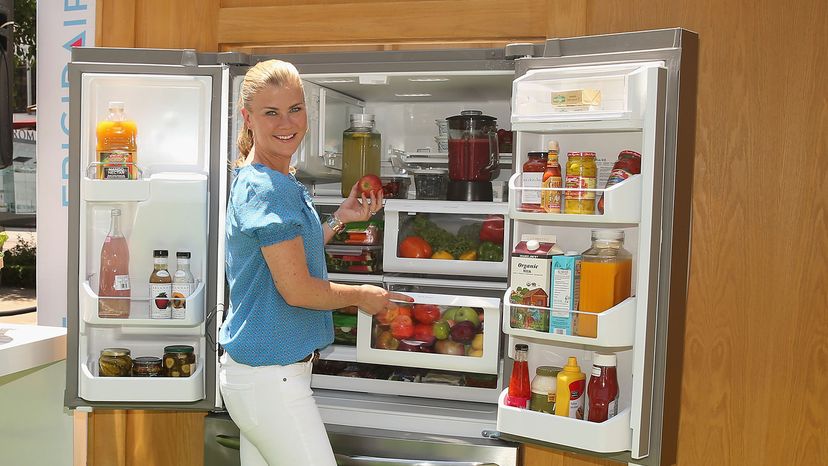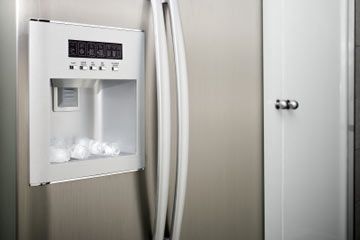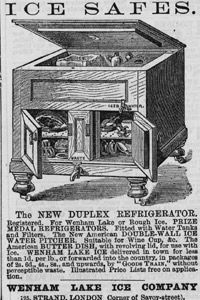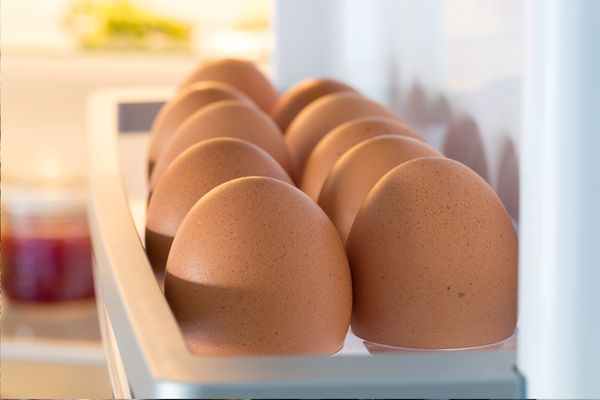
Think your refrigerator is just one big box of evenly cold air? Not so! The temperature inside the average fridge actually varies from front to back, bottom to top and everywhere in between. Because of this, food product placement within the appliance is far more important than you probably realize.
The whole purpose of the modern refrigerator is to slow the growth of bacteria, which thrive in temperatures from 40 to 140 degrees Fahrenheit (4.4 to 60 degrees Celsius). As a result, refrigerators are typically set at or below that low end to protect foods from succumbing to bacteria, which threaten to spoil them prematurely or even worse, make you sick.
Advertisement
Manufacturing giant Samsung recommends an ideal setting of 38 degrees Fahrenheit (3 degrees Celsius). Many refrigerators (even the new ones!) don't feature an easy-to-read temperature display. If that's the case for yours, drop a few bucks on a freestanding refrigerator thermometer to make sure everything's working as it should and your food is being kept at safe temperatures.
Although it might seem like time spent organizing the fridge will spoil your day, doing so will actually make it more user-friendly, easier to clean and food safety-conscious. Check out this location-specific guide to refrigerator food storage:
In the Door
Those little bins on the inside of refrigerator doors are convenient, but they don't maintain a consistent temperature, so definitely refrain from putting perishable foods, like eggs or milk, in there.
Reserve this space for condiments, salsas, salad dressings and other such items that are high in preservatives anyway, and thus unlikely to be affected by slightly higher temps. Pasteurized orange juice can also live in the door no problem. Bottles of soda and wine can stay there too.
On the Top Shelves
This area is not as cold as the bottom of the fridge, so save it for the foods that don't need extra-chilly temps. Restaurant professionals will tell you that the industry standard is to store foods that are ready-to-eat or already cooked (like leftovers and pies) on the top shelf. Storing them up high also keeps these items from being contaminated by meats or other drippy products, which could cause foodborne illness.
Cheat sheet: salad dressings, condiments, pickles, salsas, butter, margarine, pasteurized orange juice, nut oils.
Cheat sheet: drinks, leftovers, ready-to-eat foods.
On the Middle Shelves
This is the most temperature-controlled part of the fridge, so place eggs here. Drinks and prepared foods can also live on the middle shelf if you ran out of room up top.
Cheat sheet: eggs, fruit that doesn't fit in the drawers, anything that didn't fit on the top shelf.
On the Bottom Shelves
The back of the bottom shelf is the coldest spot in the fridge, so store perishable dairy products here to keep them edible, longer. Never store foods with high water content here, like certain fruits or veggies, because the water within them can and will freeze, effectively ruining them!
Cheat sheet: milk, cottage cheese, yogurt, sour cream.
In the Drawers
Whenever possible, use the drawers that so many refrigerators feature to separate meat and produce. Typically, there's Veggies need a more humid environment than fruits do.
The other is often ideal for raw meats, seafood and poultry, not only because it's in the bottom (and therefore coldest part of the refrigerator), but also because it keeps meat juices from potentially cross-contaminating other foods.
If no drawer is available, seal meats in bags or put them in their own plastic bin on the bottom shelf in the back. Never put meats on top because you then run the risk of dripping.
Many refrigerators also have one of those long, skinny drawers that are intended for cheeses, deli meats and the like because they are a little colder than the rest of the appliance.
Cheat sheet: one drawer for meats, the other for produce. Never mix and match.
Advertisement





